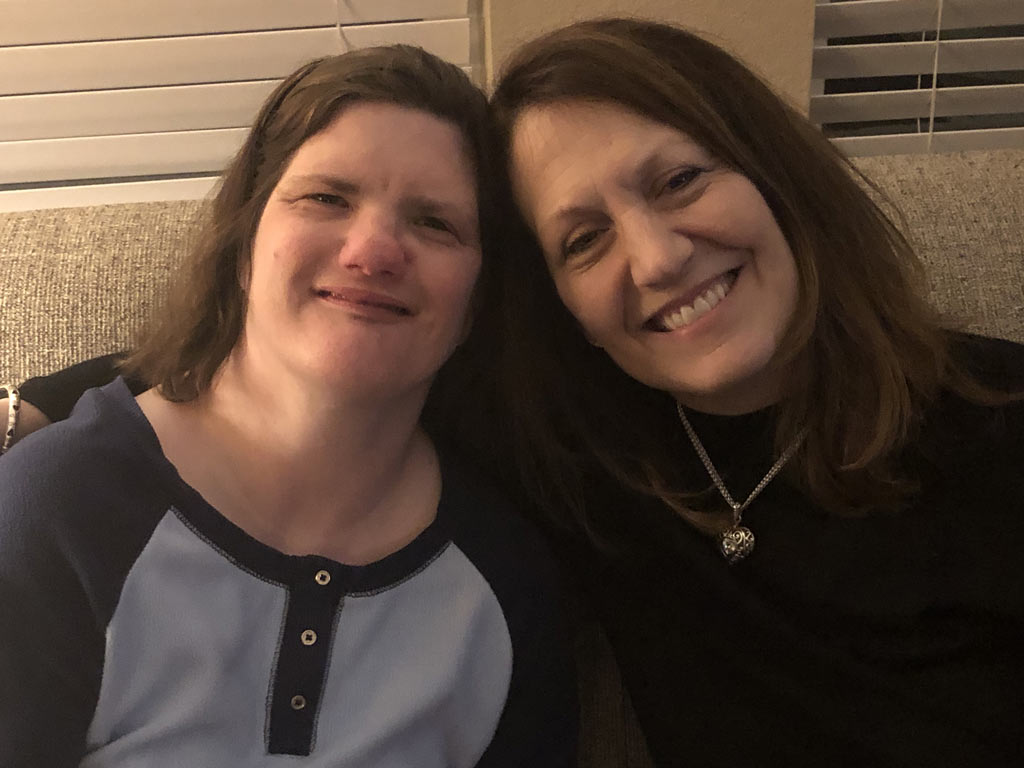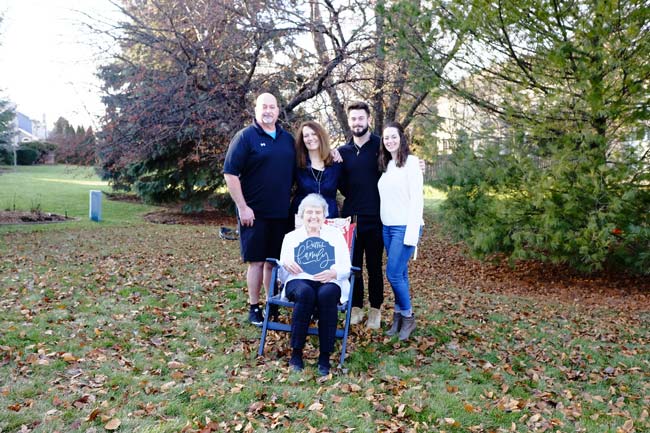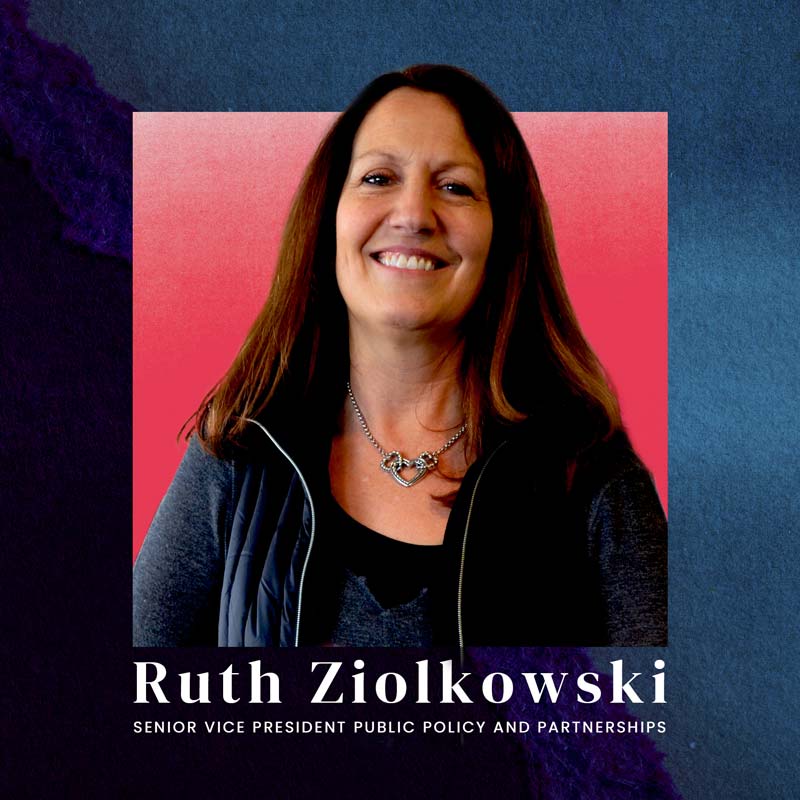CATEGORIES
Inclusion and Impact | People We Admire | TechnologyOverview:
- Ruth’s family values of integrity and service played an important role in shaping who she is.
- Technology is a great equalizer in helping people with disabilities access knowledge.
- Creating a balance between what is right and beneficial for students and producing marketable products is important.
- Moving away from the negative thought spiral is the first step to dealing with challenges.
- Create a vision and creatively challenge assumptions and norms.
- Choose to work where people recognize your merit and support your growth.
- Culture is critical. Developing a strong culture where individuals feel they can be their best also makes a company reach higher goals.
1. Please tell us about your background and childhood and how they shaped who you are today.
I grew up with four brothers, which had a lot of influence on me. My family never viewed me differently—I was just one of the kids. This mindset helped me always look ahead to the larger picture instead of focusing on the differences.
My parents were involved in service, volunteering, and helping others in whatever capacity they could. They taught us grace and gratitude and encouraged us to share what we had with other people. They practiced and taught integrity and honesty. My dad would say, “It is not about how hard you work, but showing that you’re always willing to show up regardless of what you have.”
These values helped me become an empathetic and mindful leader. Creating and being a part of an organization keeps you aware that your employees have families, and you’re working for them as much as you are for your customers. My business partner, Don Johnson, has also influenced me greatly. He taught me the importance of taking risks and changing the norm to move forward. To be a leader, you have to trust your gut. Things may not work out perfectly, but it is important to take risks.
2. Tell us about your professional journey and the inspiration behind it.
I started my career as an occupational therapist. I took some jobs in high school and college related to disabilities. One of the families I worked with had a daughter named Tina, who had cerebral palsy. Her speech was unintelligible. I would take her out every day. Her mom would ask how I was willing to take her around when no one else did. For me, she was just a kid, and children need to go to the playground and the zoo, explore, and experience the outdoors. Meanwhile, we were also exploring different technologies to help her communicate better. This intrigued me, and I wanted to learn more about communication systems that would help Tina and other non-verbal people. I was gaining interest in the technology side of occupational therapy.
Don Johnson and I started incorporating technology with therapy for physical disabilities. We explored whether giving access to computers would open their world to newer and better opportunities. We were able to do amazing things with technology like the Apple II Series. With time, we got people to run the computer in the blink of an eye. We had a gentleman who could use Morse code to communicate via a computer.
As we continued working in the field, realized that we were not just a company to access tools but we were truly a literacy company. This was a significant shift. People thought we were crazy but we saw the benefits of our technology could reach larger populations, like dyslexia, ADHD, and speech & language impairment, allowing us to focus on literacy for all students—across barriers like physical and cognitive disabilities. We believe technology is a great equalizer and want to leverage it to empower the differently abled. We networked and collaborated with other companies on board. However, for the first five years, people had little faith in us.

All means all. We held on to this belief, and we were able to help students with significant challenges. We also realized that people with hidden disabilities were being overlooked. Everyone deserves the best instructions because people also learn differently. People with dyslexia and dysgraphia, for example, learn better with their ears than their eyes, just like blind people.
We need to stop discriminating against people and not focus on their deficits. We must allow them to reach their full potential. Through non-traditional methods, such as listening to text, we can help students read above their grade level. We need to refocus and redefine what technology looks like in education.
3. You are a mentor at FBLA with highly skilled students. Please share your motivation to be a mentor and your experience.
I love the field of education and keep coming back to it. I was brought to Future Business Leaders of America (FBLA) by someone who knew I was a business leader in the community.
Sometimes, you read the news and wonder where the world is going. But when I mentor students, I feel the world is in great hands. Our kids are great thinkers; they have great ideas. They work hard to do schoolwork and are also involved in extracurricular activities, such as the band, sport, or musical, and then they come to FBLA and do more work. It is interesting to see how hard people are working there.
The FBLA program is amazing. It takes students into the real world of business. People find it difficult to understand that the world is a big business. Even nonprofits have to learn how to run an organization to keep it alive. Money is like oxygen and blood; you know you need it to survive. But you can’t solely focus on money if you want to build a successful company in the long run. The FBLA allows students to see what the world can look like and how they can participate in, explore, and change it.
Mentoring students is fun. I love to bring their business concepts to work, guide them through their ideas, and see how they execute them. They learn technology in school but not how to apply it. I teach business formulas, and they feel they learn more here in five minutes than in school in an hour. But that’s not true; we are just teaching them the application of what they learn in school.
We need to give students credit for being open to each mentor. They realize we bring something different. There is something in the program that makes them open to listening, learning, and taking it and making it their own.
4. What are some moral dilemmas you have faced in your work?
Doing what is right can be difficult. From a pedagogy standpoint, the market might crave something that may seem right for students, but we have tried to work with the researchers and stay with what is right.
In the early days of literacy, students with cognitive disabilities could not read. Often, people would take texts and put them next to pictures and then call them symbolized text. They thought it was helping students, and honestly, I did too. But with research, we learned that it would not help them become literate. We realized that they learn to recognize and decode words in texts. The market was craving the symbols, and it was hard to do what was right. We stood by it. About 10–15 years later, the market understands that research doesn’t back that up. People are drawn by what they think is right, but staying true to what you know is right is important, even if it is difficult to execute. If you build a solid, lasting company, you can afford not to go down the same road.
5. Please tell us how you deal with challenges and stressful times.
Sometimes, when I feel like things are not working out, I pull into the office parking lot and think, “Oh my gosh, I am responsible for all these families.” If I fail, if my leadership fails, it will suck me in, and it won’t help me. It is easy to get stuck in things and not move forward. To navigate such stress, one needs to move away from such negative thoughts and focus on positivity.
About ten years ago, I felt like I was stuck. I was skeptical about my career, so I did an inventory of what motivates me. I was driven by innovating, traveling, meeting people, and changing lives. I needed time to reflect and I came back more energized and excited. It gave me perspective on what I was doing and where I was doing it.
6. Please share some tips for aspiring and young leaders in your lead.
I was 31 and just had my first child when I became president of our company. I was a pretty young president, and people questioned if this was normal, especially for a woman. However, I never focused on getting there. My business partner Don always saw the best in me and didn’t think less of me for being young.
I am also grateful for the support I had at home. My husband was a constant support and a listening ear. My children grew up in a family where their dad was the stay-at-home parent. They made the choice to embrace our uniqueness as a family. They would listen and learn about the business and the tools. Having a support system that constantly has your back and hopes for your success is critical.
I was lucky that I didn’t have to worry about things that may have held me back, such as age, sex, or disability. You have a choice of where you work and who you work with. If you feel like you are in a place where you are discriminated against, then get yourself out of there. You will see your maximum potential in spaces that encourage your growth. There are lots of places where it may work and where you may have an impact, so find a space where you can succeed and reach your maximum potential.

7. What does the future look like to you?
I feel like I am at a crossroads again. I have a lot to give and want to continue giving back. I am very interested in technology, artificial intelligence, and different thinkers. AI can do what everyone else would do, but I am interested in embracing people who think differently than others.
There is an interesting intersection between AI and dyslexia. Dyslexic kids at school are often not considered smart, but their divergent thinking is what makes a difference. I am exploring how to use technology for good, such as using AI to help dyslexic kids learn to read.
Conclusion:
Ruth emphasizes the importance of doing the right thing and consciously making an impact through her work. All means all is a philosophy she follows to uplift and empower as many students as possible through technology.




